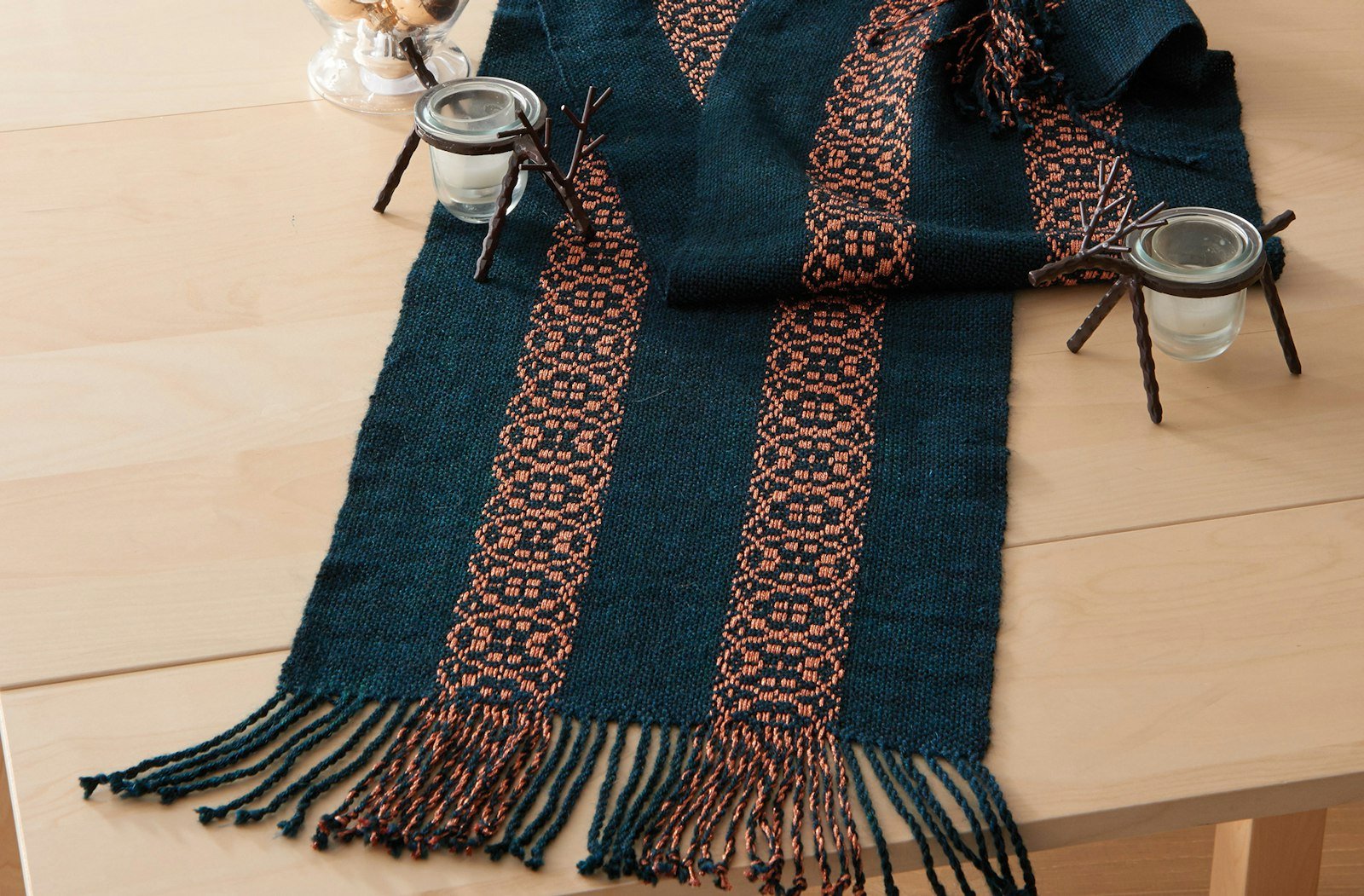Weaving with supplemental warps opens up a whole new world of design possibilities, allowing you to overcome some of the limitations of two-shuttle weaves. Deb Essen is a master of weaving supplemental warps, without the need for a second back beam. Here she is to share some more information about the technique ~Andrea
Two-shuttle weaves create wonderful patterns. Among my favorites are overshot, monk’s belt, summer and winter, and shadow weave. But there are limitations!
Patterns typically run from selvedge to selvedge. And even though you can break up the pattern lengthwise by weaving stripes of plain weave, you may wind up with “humped” pattern sections that are wider than the plainweave sections, depending on the size and density of the pattern weft.
What if you want to use a very expensive yarn or a skein of handspun but have limited quantities? Even with careful planning, you may run out of pattern weft . What to do, what to do?
Supplemental warps to the rescue! A supplemental warp is an extra warp chain or chains that can be spaced across a ground warp so that the pattern runs the length of a project.
The pattern sections can be interspersed with sections of plain weave without worrying about distorted selvedges. You can precisely plan the amount of supplemental pattern warp needed, eliminating the fear of running out of yarn. Busy patterns can be broken up to highlight the best sections, and far less pattern yarn is needed to weave only sections of pattern, which means a smaller investment in expensive yarns.
The other bonus is that a traditional two-shuttle pattern weave structure turns into a one-shuttle weave. You weave with ground weft only. No need to worry about juggling two shuttles, wrapping the ground and pattern wefts at the selvedges, or using floating selvedges. Warping may take a little longer with the supplemental warps, but weaving is much, much faster.

Detail of the turned overshot patterning on the Copper River Runner.
Advantages of Turning a Draft for Overshot Weaving
This runner uses a section of pattern from an overshot name draft I created called “Tis the Season.” The name draft is a traditional overshot weaving pattern. I then turned the draft and separated the pattern sections with plain weave.
The holidays always call for a little “bling,” and I’ve been playing with using Kreinik metallic threads in weaving. Kreinik threads are well known in the needlepoint/stitching industry, but they are not quite so well known in weaving. I’m delighted to say they are weaving-friendly, and using the metallic thread as a supplementary pattern warp gave me the bling I wanted, saved me money, and kept the soft drape of the Mountain Colors Bearfoot merino-blend knitting yarn.
Yes, knitting yarn and metallic stitching thread in one project! Maybe I should have called it “Breaking the Rules.”
—Deb
Deb Essen is the instructor in the videos Unlocking Profile Drafts and Weaving with Supplemental Warp as well as many other essential weaving resources.In addition to running her handwovens business, Deb teaches at national and international conferences and guilds.
Published September 27, 2016 Revised August 10, 2021

